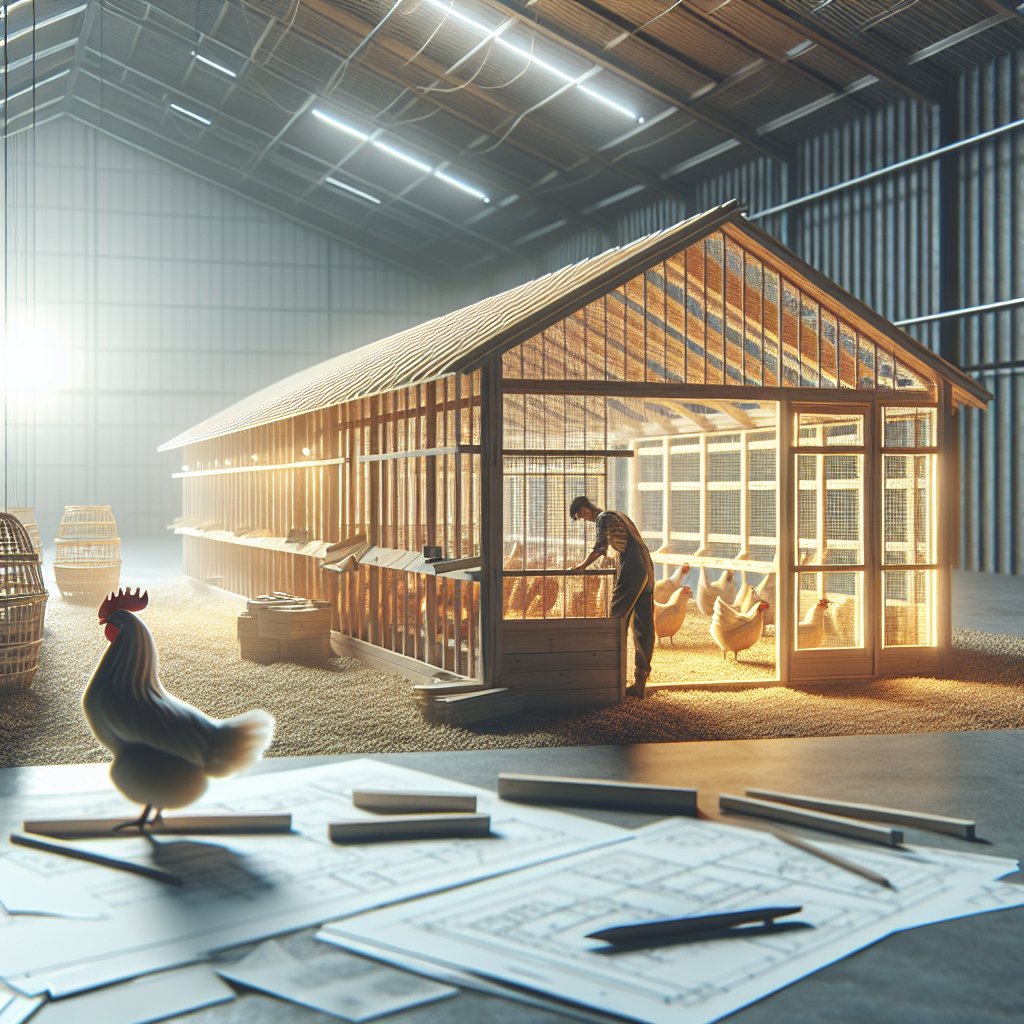
Building a low-cost chicken coop for your farm is an essential step towards sustainable poultry farming. A well-designed coop not only provides shelter and protection for your chickens but also ensures their health and productivity. In this article, we will explore the key considerations and steps involved in constructing an affordable yet efficient chicken coop that meets the needs of both your chickens and your budget.
Understanding the Basics of Chicken Coop Design
Before embarking on the construction of a chicken coop, it is crucial to understand the fundamental aspects of coop design. A chicken coop serves multiple purposes: it provides shelter from weather conditions, protection from predators, and a comfortable space for chickens to lay eggs and roost. Therefore, the design should prioritize these functions while keeping costs in check.
Location and Size
The location of your chicken coop is a critical factor that can influence the well-being of your flock. Choose a site that is elevated to prevent flooding and ensure good drainage. Additionally, the coop should be positioned to receive adequate sunlight, which is essential for the health and egg production of chickens. Consider the proximity to your house or barn for easy access and maintenance.
When determining the size of the coop, consider the number of chickens you plan to keep. A general rule of thumb is to provide at least 3-4 square feet of space per chicken inside the coop and 8-10 square feet per chicken in the outdoor run. This ensures that the chickens have enough room to move around comfortably, reducing stress and the risk of disease.
Materials and Construction
To keep costs low, consider using recycled or repurposed materials for the construction of your chicken coop. Pallets, old wooden crates, and scrap lumber can be excellent resources for building the structure. Ensure that the materials are sturdy and free from harmful chemicals that could affect the health of your chickens.
The coop should have a solid floor to prevent predators from digging underneath. Use hardware cloth or welded wire mesh for windows and ventilation openings to keep out pests while allowing fresh air to circulate. Proper ventilation is crucial to prevent the buildup of ammonia from chicken droppings, which can be harmful to the birds.
Essential Features of a Functional Chicken Coop
Once the basic structure of the coop is in place, focus on incorporating features that enhance its functionality and comfort for your chickens. These features will contribute to the overall health and productivity of your flock.
Nesting Boxes and Roosting Bars
Nesting boxes are essential for hens to lay eggs comfortably. Provide one nesting box for every 3-4 hens, ensuring that each box is spacious enough for a hen to sit and lay eggs without disturbance. Line the boxes with straw or wood shavings to create a soft and inviting environment.
Roosting bars are where chickens perch to sleep at night. Install these bars at a higher level than the nesting boxes to encourage chickens to roost there. Ensure that the bars are smooth and sturdy, providing enough space for each chicken to perch without overcrowding.
Feeding and Watering Systems
Efficient feeding and watering systems are vital for maintaining the health of your chickens. Consider using gravity-fed feeders and waterers to minimize waste and ensure a constant supply of food and water. Position these systems at a height that is easily accessible to the chickens but elevated enough to prevent contamination from droppings.
Regularly clean and refill the feeders and waterers to prevent the growth of mold and bacteria. Additionally, consider adding a grit dispenser, as chickens require grit to aid in digestion.
Maintaining and Improving Your Chicken Coop
Once your chicken coop is built and operational, ongoing maintenance is essential to ensure its longevity and the well-being of your flock. Regular cleaning, repairs, and improvements will keep the coop in optimal condition.
Cleaning and Sanitation
Regular cleaning of the chicken coop is crucial to prevent the spread of disease and parasites. Remove droppings, soiled bedding, and leftover food daily. Perform a thorough cleaning of the coop at least once a month, using a mild disinfectant to sanitize surfaces.
Replace bedding materials regularly to maintain a clean and comfortable environment for your chickens. Consider using deep litter bedding, which involves adding fresh bedding on top of old bedding, allowing it to decompose naturally and provide warmth during colder months.
Seasonal Adjustments and Upgrades
As the seasons change, make necessary adjustments to the coop to ensure the comfort and safety of your chickens. In winter, add insulation or windbreaks to protect against cold drafts. Ensure that the coop is well-ventilated but free from direct exposure to harsh weather conditions.
In summer, provide additional shade and ventilation to prevent overheating. Consider installing a fan or misting system to keep the coop cool during hot weather. Regularly check for any structural damage or wear and tear, making repairs as needed to maintain the integrity of the coop.
By following these guidelines and continuously assessing the needs of your flock, you can build and maintain a low-cost chicken coop that supports a healthy and productive poultry operation. With careful planning and resourceful construction, your chicken coop will be a valuable asset to your farm for years to come.

